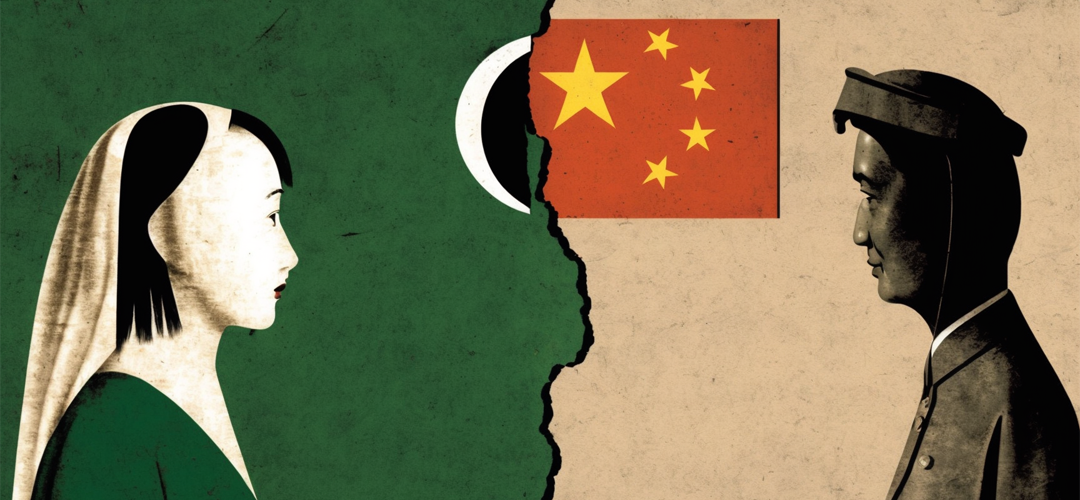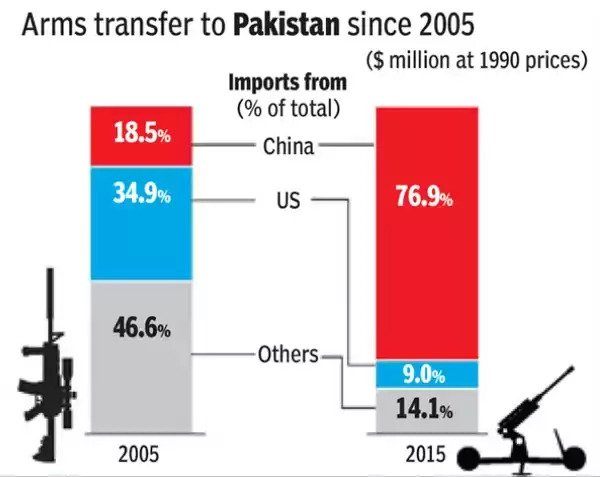Pakistan: China’s Albatross!!
March 18, 2023 | Expert Insights

Pakistan is in an economically perilous situation right now, and that would be an understatement by any account!
With the IMF holding out on the stalled $ 7 billion loan package subject to financial and political assurances and guarantees, Pakistan continues to live through the nightmare of seeing its economy perched on the edge of a precipice. It has appealed to all and sundry of its rather limited list of friends and allies, but till the IMF package is cleared, no other country is willing to risk its money on Pakistan. The focus, therefore, has returned to China, its largest debtor.
On March 4th, the Pakistan Finance Minister tweeted, "Formalities completed and Chinese Bank, ICBC approved rollover of U.S. $1.3 billion facility which has been repaid by Pakistan to ICBC in recent months. Facility will be disbursed in 3 instalments, first one of U.S. $500 million has been received by SBP. It will increase forex reserves!”
Background
The China-Pakistan relationship did not develop in a single day. Pakistan loses no opportunity to publicise its role in enabling the thawing of the relationship between the U.S. and China, ushering Beijing's entry into the global stage.
Initially, there was nothing pre-ordained that Pakistan and China would turn out to be "all-weather friends". Both the People’s Republic of China and Pakistan were born at the start of the global Cold War. This Cold War paradigm would colour the relationship between Islamabad and Beijing for the next few decades. Initially, both countries were on opposite sides of the Cold War power bloc divisions. Pakistan had aligned with the Western bloc while Communist China was still on good terms with the Soviet Union and the wider Eastern Bloc. At that time, the Chinese were more interested in diplomatically engaging non-aligned India. But geopolitical realities eventually began to change. And the many obstacles which were holding back Pakistan-China relations melted away.
First, Pakistan's reliance on Western support proved to be a grave miscalculation. The Pakistanis had hoped that with the backing of Western countries, they could deal with India. But the Western alliance was not interested in the growing rivalry between India and Pakistan. Their main strategic foe remained the Soviet Union and global communism. That is why they decided to support Pakistan in the first place because the country was located strategically near the southern border of the USSR. As a result, the expected help did not come from the West during Pakistan’s wars with India in 1965 and 1971. Pakistanis were becoming disillusioned with Western promises and eager to look in new geopolitical directions.
The so-called unified Communist bloc was itself falling apart. The People's Republic of China (PRC) was no longer willing to be a junior partner to the Soviet Union. This inevitably led to a Sino-Soviet split. The 1962 border conflict between India and China forced New Delhi to inch closer to Moscow in its international strategic alignment.
The left-wing Pakistani leader Zulfiqar Ali Bhutto was key in opening Pakistan's relations with China. So, when the United States, under President Nixon, decided to normalise its relations with the PRC, it chose Pakistan as a conduit. The Chinese also quickly realised the value of Pakistan as a buffer state in containing the influence of regional rival India. China began to supply arms to Pakistan, which came to be of use during its wars with India. A special emphasis was placed on enhancing connectivity between the two countries. For this purpose, the Karakoram Highway was constructed, connecting Pakistan's Punjab and Gilgit-Baltistan provinces with the western regions of China. Beijing also played a key covert role in developing the Pakistani nuclear programme.

Analysis
The economic aspect was never high on the agenda during the early part of their relationship. PRC struggled with its economic survival under Mao Zedong's mindless cultural revolution and its support of diverse communist-inspired conflicts in Asia and Africa. There was little cash to spare in Chinese coffers in those bleak days. In 1976 Mao died and China was ready for a transformation.
Pakistan was a favourite of the West and had openly thrown its lot with them, joining military organisations like CENTO. The West found Pakistan more favourable for its financial munificence accounting for a healthy rate of growth in Pakistan, which remained the best in South Asia for a period. In addition, oil money was dribbling into the country from the oil-rich Gulf countries on various pretexts, including providing military security to many sheikdoms and remittances of a large Pakistani ex-pat community. The Shah-ruled Iran followed the American cue to invest generously in Pakistan.
In the late 1970s, China experienced its 'peaceful rise', swiftly gathering pace as it switched to a market economy under communist control. The experiment was successful beyond imagination, and the rest is history.
It was only in 2007 that China considered it opportune to sign a Free Trade Agreement (FTA) with Pakistan. Then the Belt and Road Initiative (BRI) was initiated by China in 2013. Suddenly Pakistan became an economically attractive prospect for Beijing. It was an important link in the regional connectivity that the BRI initiative sought between China, Central Asia and West Asia. Huge Chinese loans and investments flowed in.
However, all this could not change the inherent structural weaknesses of Pakistan’s economy. The Chinese side also behaved haughtily towards the Pakistanis. They only looked after their interests, did not share management with the Pakistanis, placed harsh terms and conditions and did not care about the common people. As a result, there is little grass root support for Chinese projects, especially along the CPEC.
Then recently, Pakistan's economy had a complete meltdown, with IMF holding out a bail-out package seeking watertight guarantees from a lame-duck government and the potential successor (the PTI of Imran Khan). Pakistan was ready to repeat the Sri Lankan tragedy.
Of course, China holds the key; it is reported to hold nearly 30 per cent of Pakistan's external debt. As $4 billion of the total debt will be rolled over, Pakistan still needs to clear $3 billion by June.
Assessment
- Loan forgiveness is part of a larger strategy on the part of the Chinese. With the Chinese economy going through a downturn, Beijing is carefully carrying out its economic diplomacy.
- Pakistan has few options but to fall more closely under the Chinese embrace. The IMF, which the West closely scrutinises, is chary of issuing loans to Pakistan which will be promptly handed over to Beijing without making any impact on the country's debilitated economic structure.
- With its economy under stress, still struggling with its Zero Covid policy aftereffects, China would naturally exercise the utmost caution before opening its coffers to a state which has killed its economy by profligacy at the highest levels over decades.








Comments